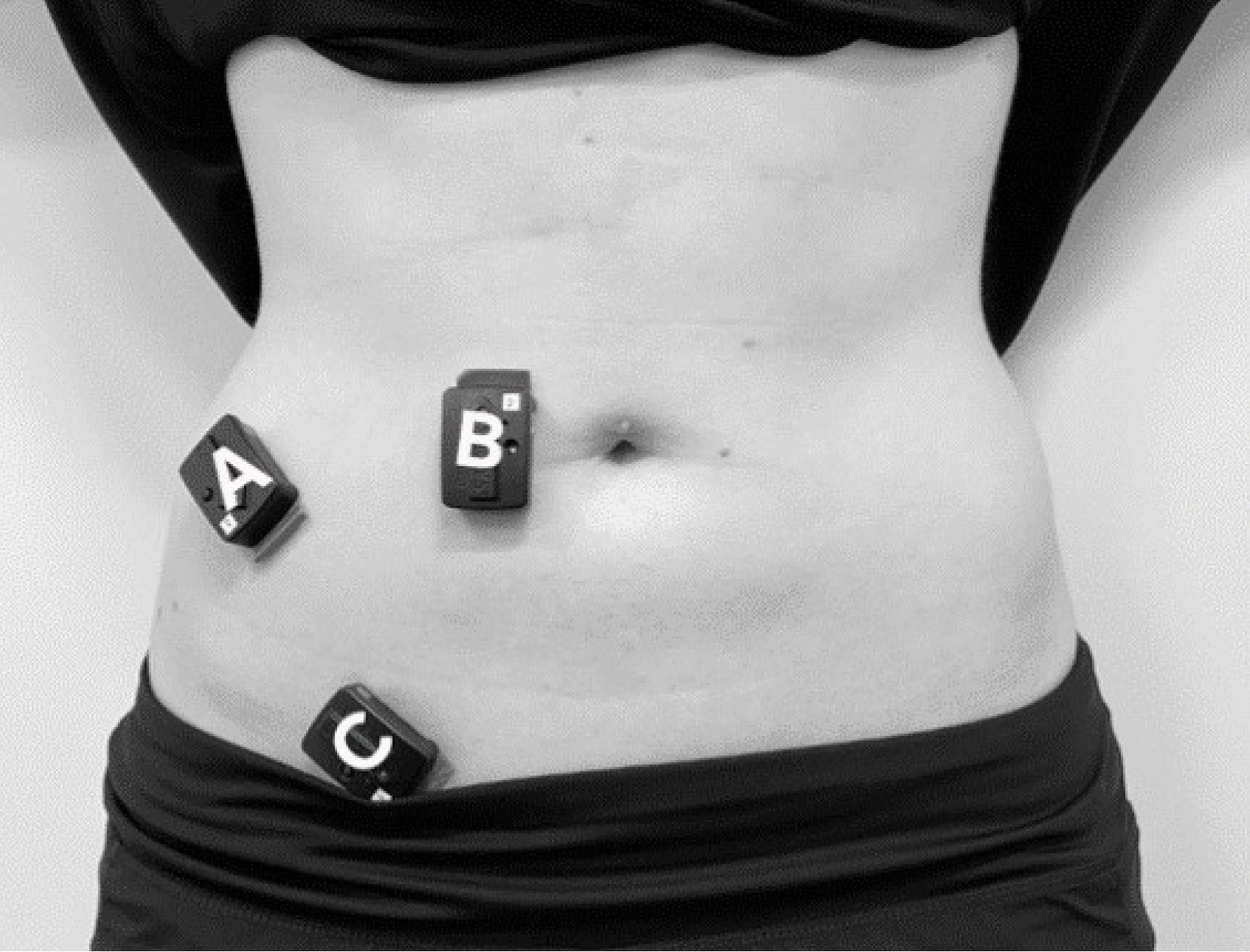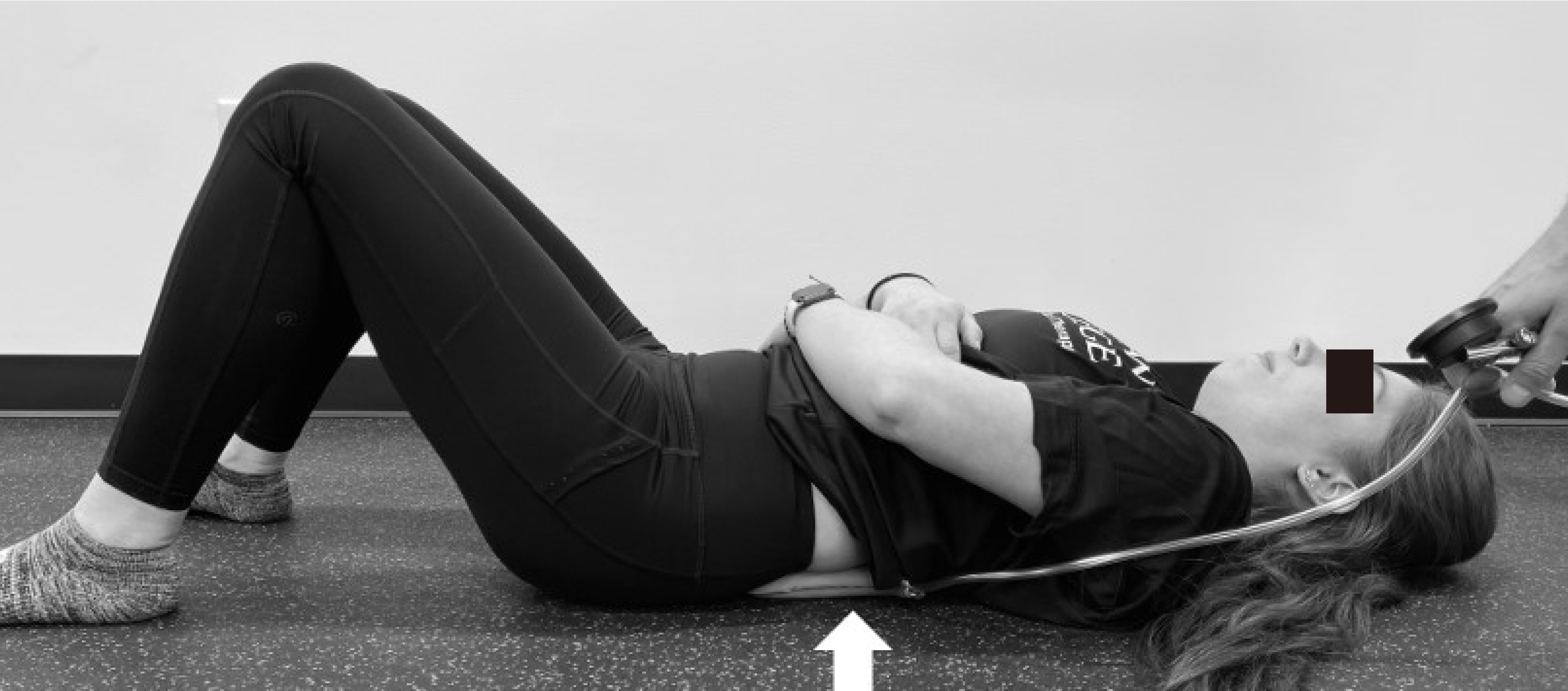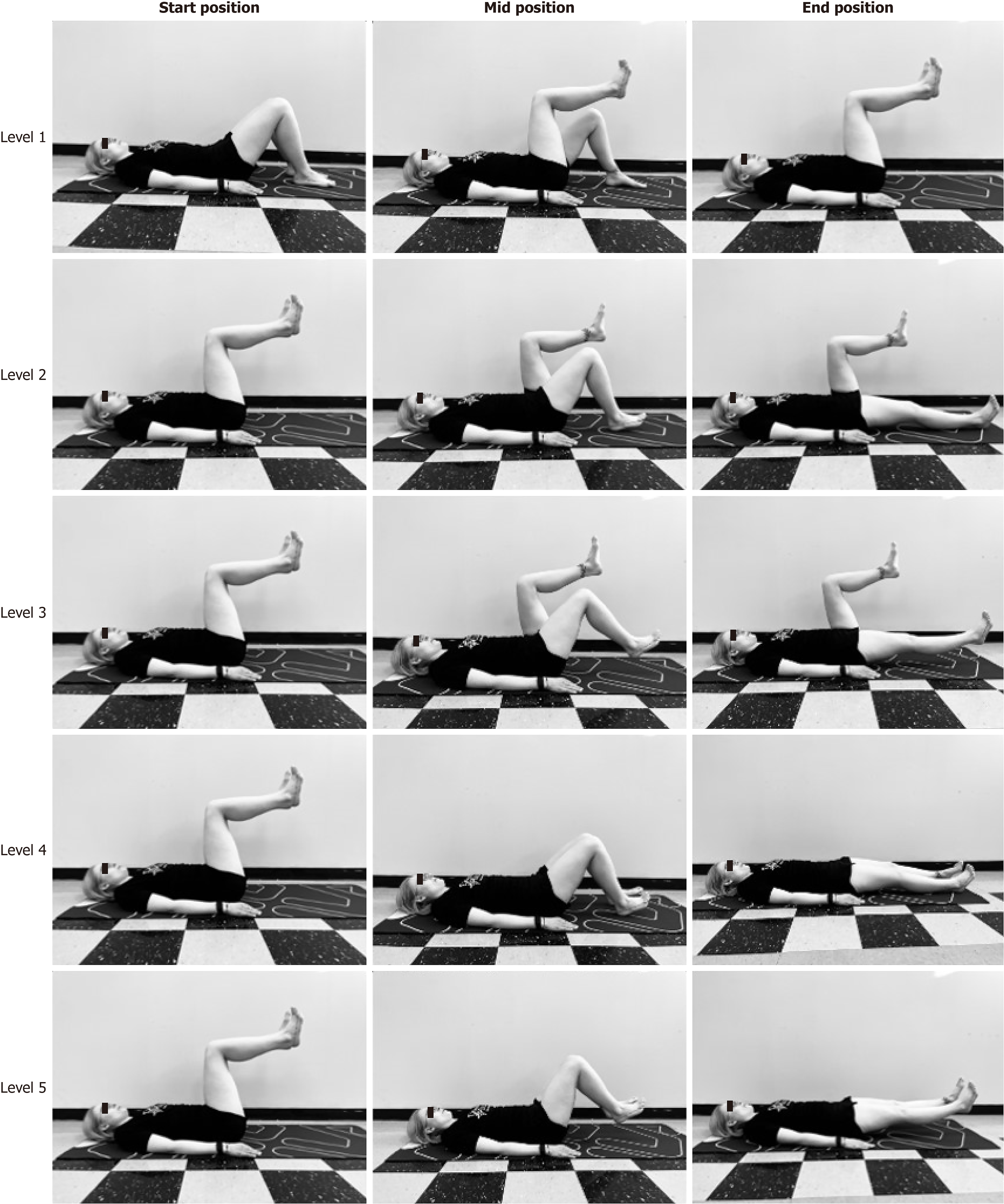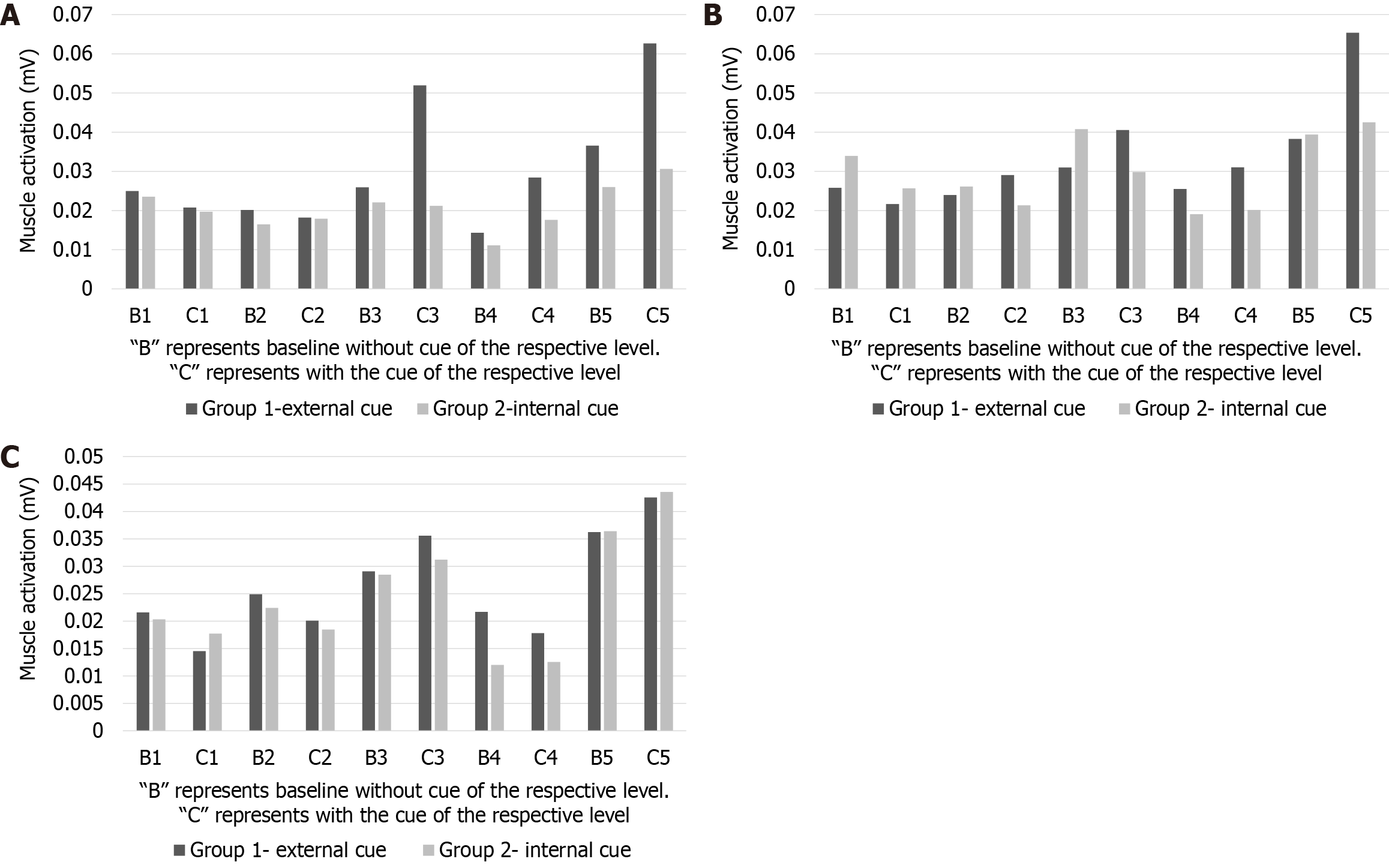Copyright
©The Author(s) 2025.
World J Methodol. Mar 20, 2025; 15(1): 92943
Published online Mar 20, 2025. doi: 10.5662/wjm.v15.i1.92943
Published online Mar 20, 2025. doi: 10.5662/wjm.v15.i1.92943
Figure 1 Electromyography surface electrode placement.
(A: External oblique, B: Rectus abdominis, and C: Transverse abdominis/internal oblique).
Figure 2
The pressure biofeedback unit placement between L4/L5 segments for external cue group.
Figure 3
Examples of the step-by-step progression of each of the five exercise levels.
Figure 4 Shows the changes of the muscle activation with external and internal cues on transverse abdominis/internal oblique, rectus abdominis and external oblique muscles.
Transverse abdominis/internal oblique, rectus abdominis and external oblique muscles showed similar muscle activations during each level exercise, there was no statistically significant muscle X level interactions. A: Effects of external and internal cue on muscle activation of transverse abdominis/internal oblique muscles; B: Effects of external and internal cue on muscle activation of rectus abdominis muscle; C: Effects of external and internal cue on muscle activation of external oblique muscle.
- Citation: Stifter S, McCaffrey J, Nichols T, Ozcan Edeer A, Ward J. Effect of external and internal cues on core muscle activation during the Sahrmann five-level core stability test. World J Methodol 2025; 15(1): 92943
- URL: https://www.wjgnet.com/2222-0682/full/v15/i1/92943.htm
- DOI: https://dx.doi.org/10.5662/wjm.v15.i1.92943












